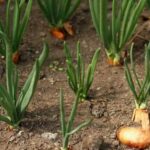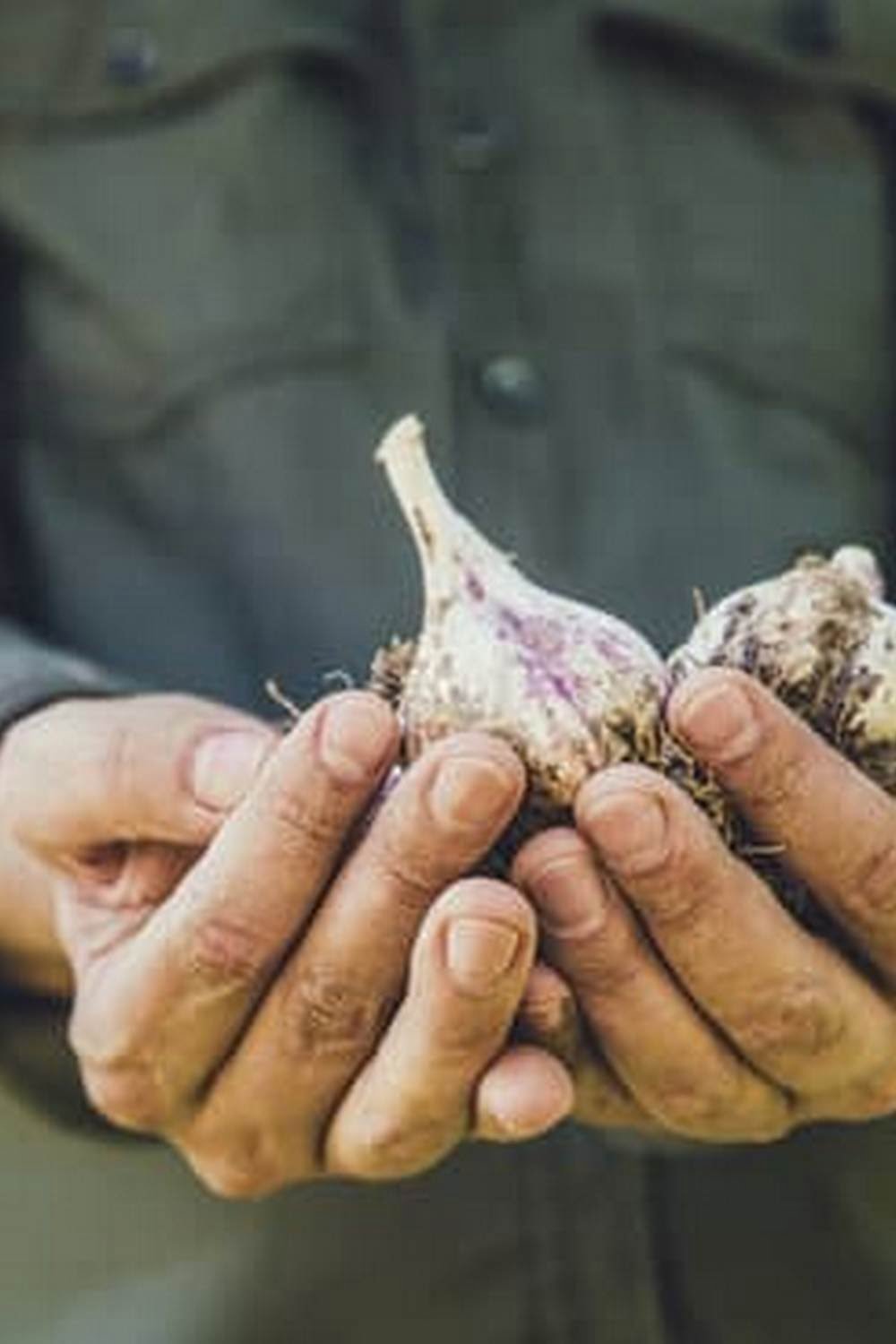Introduction
Mushroom compost is an ideal growing medium for vegetable gardens. It provides important nutrients while also stimulating healthy plant growth. Using mushroom compost in the vegetable garden can improve soil fertility, conserve water and help control pests and diseases.
Mushroom compost contains a range of macronutrients, including nitrogen, phosphorus, potassium, calcium and magnesium. These are essential for the growth of vegetables such as tomatoes, peppers, carrots, lettuce and eggplants. The presence of these nutrients improves the soil structure so that plants can access more oxygen and water. This results in more vigorous growth and increased yields.
In addition to providing nutrients for the soil, mushroom compost has excellent moisture-retention characteristics. This helps to conserve water by reducing the amount of watering needed for the vegetable garden. It also helps to regulate temperature extremes which are often damaging for plants during hot summer days or cold winter spells.
The organic matter from mushroom compost also acts as food for beneficial organisms such as earthworms in your vegetable garden soil; this improves the soil structure further still by increasing porosity which enables better root penetration. The same beneficial organisms can help protect against disease causing microbes; they feed on any harmful bacteria or fungi present in the plant’s root zone whilst leaving beneficial ones intact. Furthermore, certain beneficial organisms release compounds that have insecticidal properties which can help protect your vegetables against common pests like aphids or caterpillars.
By using mushroom compost in your vegetable garden you will benefit from improved fertility levels, greater moisture retention and better protection against pests and diseases – all things that make cultivation much easier!
Preparing Mushroom Compost
Mushroom compost can be a great addition to vegetable gardens, providing essential nutrients, such as nitrogen and phosphorus. For best results, however, it is important to properly break down the fungal matter so that it can be effectively used in the garden. The first step is to spread mushroom compost out evenly on the soil surface. It is recommended to use four inches of mushroom compost per square foot of soil. Once this has been done, it should then be mixed into the existing soil with a spade or cultivator, making sure that all areas are covered evenly.
The next step is to allow time for the mushroom compost to break down over several weeks or months before planting anything in it. During this time, you should water regularly and give it time for beneficial fungi and bacteria to become established in order to release nutrients into the soil. You can also add a layer of mulch at this point if desired, which will help retain moisture and improve texture of the soil over time. Finally, before planting any crops into your newly enriched vegetable garden bed you should take another few weeks or months to till the soil up again in order to further aid the breaking down process of the mushroom compost and ensure an even dispersal of ingredients throughout your garden bed resulting in an optimal environment for growing vegetables.
Preparing Soil
Mushroom compost is a common organic amendment used to prepare soil in a vegetable garden. It helps to increase the organic content and fertility of soil while adding valuable nutrients. Understanding the pH balance and nutrient needs of your vegetable garden will help you determine whether or not mushroom compost is right for your needs.
When preparing the soil for a vegetable garden, it is important to first understand the needs of your plants and the optimal pH balance for them. This can be done through a soil test, as different vegetables will have specific ideal pH levels they thrive at — some may prefer slightly acidic while others may require alkaline soil. Knowing this range and the current state of your soil will help you decide which form and kind of amendments you need.
Mushroom compost has high nitrogen content and creates essential compounds for life in the soil by creating highly nutritious humus that helps break down toxins and remediate contaminated soils. Mushroom compost is rich in microorganisms that may help improve water holding capacity, reduce erosion, decrease runoff, and convert carbon compounds into nitrogen – all integral elements to supporting plant growth in any garden. Further, the material’s open structure allows oxygen to circulate within it so roots can breathe better, allowing them easier penetration into other areas of the vegetable garden soil through root pruning. When applied regularly throughout an entire growing season, mushroom compost can serve as an effective ingredient for healthy dirt for vegetable crops over time.
Application and Integration
When integrating mushroom compost into your existing vegetable garden, start by cleaning the area of any weeds and removing damaged or diseased plant parts. Loosen up the soil around each plant with a hand cultivator and rake before adding several inches of mushroom compost, enough to cover the surface of the beds. Use a spade or shovel to mix the compost evenly into the upper four to six inches of soil. Water lightly after application to help settle and activate the mushrooms’ beneficial microorganisms.
Once integrated, mushroom compost can be used as a side dressing on your vegetables two to three times during their growing season. To do this, apply one inch of compost around each plant, taking care not to pile it up against their stems where it could cause rot and disease – instead keep it away from plants at least three inches. Dig lightly with a rake or hand fork to mix it into the top one-inch layer of soil and water lightly afterwards.
Finally, more mature plants will benefit from mixing some saucered manure – poultry manure, horse pelleted manure or rabbit pellets -into their growing medium when considering long term fertility needs: combine one-half cup per six square feet every four weeks for an extended fertilization session.
Maintenance and Monitoring
Mushroom compost is an excellent organic soil amendment with many benefits for vegetable gardens. Nutrients in mushroom compost can be slow-release and much of them become available throughout the growing season. For this reason, it’s important to monitor your garden for nutrient deficiencies and pH levels. The best way to do this is with a simple soil test kit purchased from any gardening store.
During the beginning of the growing season, it’s a good idea to take your initial readings from multiple spots in the garden and record them on a chart so you can keep track of how they change over time. Keep an eye out for anything that might throw off your nutrient balance or pH levels – such as a heavy rain or new fertilizer application – and be sure to adjust accordingly. You should also monitor your vegetables closely and watch for any signs of nutrient deficiency, such as yellowing leaves or stunted growth. If necessary, supplement with additional organic fertilizers until proper nutrient balance is achieved .
Care Tips and Tricks
Mushroom compost can be a great addition to vegetable gardens; it provides garden beds with rich nutrients, helps retain moisture and improve drainage. When used correctly, mushroom compost can really benefit vegetable gardens and help boost the health of your plants. Here are some tips and tricks on getting the most out of your mushroom composted gardening efforts:
1. Prepare Your Soil Beforehand – It is important to soil test and add proper amendments such as lime, bonemeal, or fertilizer to make sure your soil pH levels are ideal for vegetables to grow. Then you should dig a trench about 2 feet deep, mixing in the mushroom compost for optimal nutrient uptake.
2. Follow the Right Fertilization Schedule – When applying fertilizer to your vegetable garden, be sure to balance out how much nitrogen (N), phosphorus (P), and potassium (K) you use based on the type of plant you’re growing. The NPK ratios often depend on whether you’re growing leafy greens like lettuce or fruiting crops like tomatoes.
3. Don’t Over-Water – Though mushroom compost tends to retain more water than regular soil, keep in mind that overwatering can still cause roots to drown in too much water which could lead to stunted growth or even death of your plants. Make sure you adjust watering depending on weather conditions and type of crop planted in order not to over-do it!
4. Mulch To Keep Weeds Away – To protect your crop from weeds or other garden pests it’s crucial you spread a layer of mulch around each plant using materials such as shredded leaves, straw or forest soil mix evenly coating the ground around and between plants while still allowing air flow into soil.
5. Monitor Gardening Progress – Managing vegetable beds with mushroom compost requires careful monitoring periodically throughout their life-cycle; watch out for signs that might suggest pests, fungi issues or nutrient deficiency so preventive action can be taken right away if necessary!
Conclusion
When used for its intended purpose, mushroom compost can be an incredibly beneficial addition to any vegetable garden. It helps promote healthy soil, which in turn supports strong and resilient plants. The nutrient-rich formula of mushroom compost is full of essential elements that nourish and enrich the soil, thus allowing vegetable plants to thrive. Additionally, because it is made up mainly of organic materials, it contributes significantly to reducing synthetic input into the garden. This reduces the cost associated with purchasing additional fertilizers, thereby decreasing financial strain on those planting gardens. Finally, mushroom compost also has high water retention levels which help reduce water usage and provides more efficient water management in the garden environment. All these benefits together make using mushroom compost an ideal choice for activating and enhancing any vegetable garden.

If you’re looking to get into vegetable gardening, or are just looking for some tips on how to make your current garden better, then you’ve come to the right place! My name is Ethel and I have been gardening for years. In this blog, I’m going to share with you some of my best tips on how to create a successful vegetable garden.





